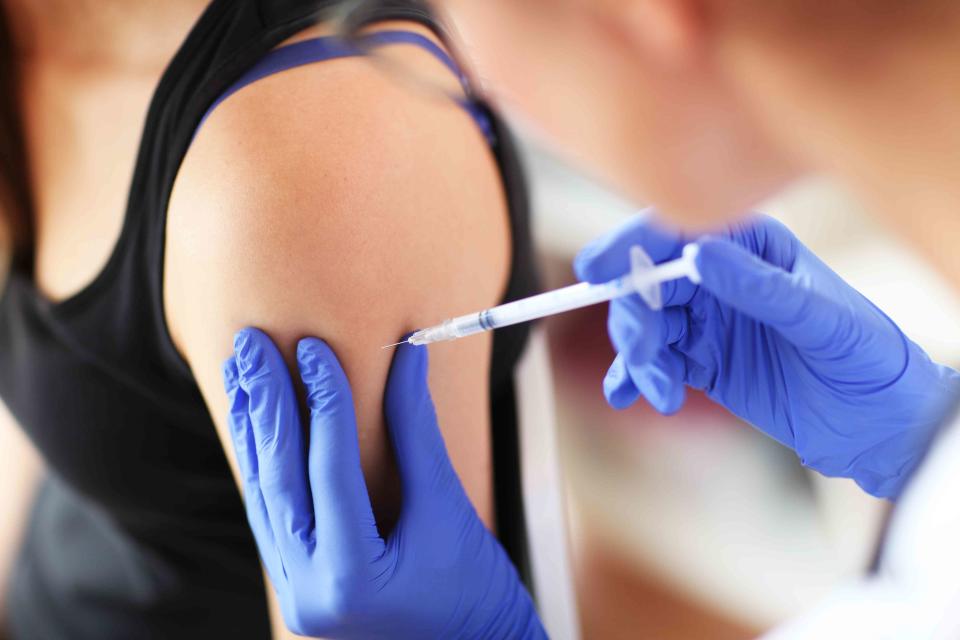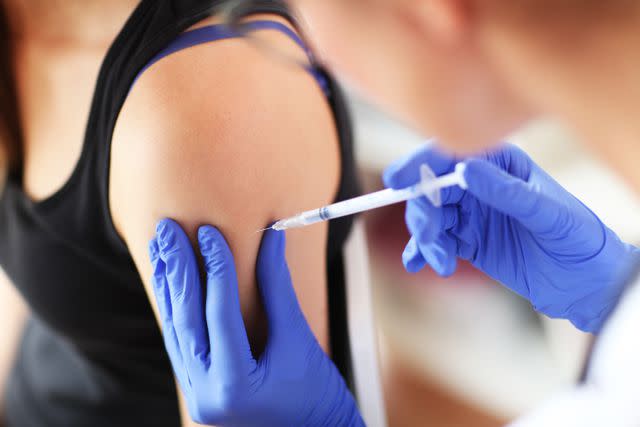How Long Do You Take Allergy Shots?
At Least 3 Years of Treatment Is Optimal

Foremniakowski / Getty Images
Allergy shots are the most common type of allergy immunotherapy, treatments to reduce your immune system’s reaction to an allergen. They may be a promising option if you have allergic asthma or symptoms like congestion and a drippy nose that impact your quality of life.
Your healthcare provider can recommend specific allergy shots that may work for you based on testing. Read on to learn about how healthcare providers select specific allergy shots, as well as allergy shot schedules, costs, and side effects.

Foremniakowski / Getty Images
Types of Allergy Shots
A healthcare provider assesses you to determine the type of allergy shot you can get. If your symptoms suggest a possible allergy, the next step is testing. Usually, this type of skin testing shows how your skin reacts to potential allergens.
Through such testing, the provider can see which substances are causing the strongest allergic reactions in your body. For example, commonly tested substances include:
Some people experience allergies seasonally in response to substances like pollen, which are more prevalent at certain times of the year. Other people experience chronic (long-term) allergies, like those from animal dander. Allergy shots are effective in treating both seasonal and nonseasonal allergies.
What Are Allergy Shots?
Based on the findings from your allergy testing, a healthcare provider might recommend you try allergy shots. Allergy shots aren’t drugs—they are just a way to expose your immune system to an allergen over time, making you less reactive to the substance and decreasing your symptoms.
A healthcare provider will inject a small amount of the substance you react to, mixed with a delivery liquid. Gradually, they increase the concentration of the allergen over time.
Some people receive a shot for just one allergen, but others are allergic to more than one substance. For example, your testing might show that you have a mild allergy to grass pollen and a strong allergy to animal dander.
The healthcare provider can mix up an allergy shot containing both components. Depending on the combination, you may need to get more than one shot at a single visit.
So unlike medications for allergies, like single-ingredient Allegra (fexofenadine), Claritin (loratadine), or Zyrtec (cetirizine), allergy shots can contain a combination of drugs tailored to your allergic response.
You'll receive your allergy shots at a medical office or clinic. Usually, this happens at a healthcare provider's office specializing in allergies (allergist), but some primary care providers also give allergy shots. You need to get your shots at a clinic so you can be monitored for potential side effects.
Allergy Shot Schedule
The schedule for allergy shots varies. Traditionally, allergy shots are initially given weekly until you work up to your maintenance dose of the allergen. This usually takes around four to six months.
After that, during the maintenance phase, you receive shots every four to eight weeks for the next three to five years. The length of the maintenance phase depends on the severity of your allergies, the degree of improvement, and personal barriers to continuing to get shots.
"Rushed" Schedules
Many people believe going to the clinic to get these treatments is inconvenient, especially during the initial phase. If this is true for you, talk to your healthcare provider about “rush immunotherapy.” Using a rush schedule, you might receive your initial shots over five to seven days or even more quickly.
The advantage of a rush schedule is that you can get to the maintenance phase more quickly. You may not need as many visits, and it may be less expensive and more convenient. And you might get your symptoms relieved more quickly. However, using a rushed schedule puts you at greater risk of a serious side effect like anaphylaxis (see below).
Other schedules are somewhere between, taking somewhat less time than the traditional schedule. Most medical providers giving allergy shots have a standard protocol that they use at their clinic.
Results
Some people start to notice improvement during the initial buildup phase. However, results vary. Others don’t see significant improvement until a year of maintenance dosing.
After stopping allergy shots, some people never have a return of their allergic reactions. However, other people do have symptoms that eventually return. Having allergy shots for at least three years may increase the chance of permanent symptom relief, even years after stopping therapy.
Side Effects
Most symptoms from allergy shots show up within 30 minutes, so you are monitored in the clinic for a period after your shot. Less commonly, you might notice a later reaction appearing in the next 12 hours.
Mild swelling, itching, and redness at the injection site are common side effects of allergy shots.
Severe reactions affecting your whole body are more concerning and can indicate a potentially life-threatening reaction called anaphylaxis. Symptoms of anaphylaxis include:
Swelling in your throat
Very low blood pressure
Rash
Vomiting
Trouble breathing
Such reactions occur in approximately 1 in 1,000 people treated with allergy shots. Fortunately, a healthcare provider can quickly and effectively treat such reactions with epinephrine.
Cost
Allergy shots can become costly, even with health insurance. If you have insurance, talk to your insurance company for exact coverage details before arranging for allergy shots. You might have a co-pay of $20 to $40 for each visit.
If you don’t have health insurance, the out-of-pocket cost of allergy shots could be between $120 and $200 per visit. The total treatment can cost thousands of dollars, even for people with insurance.
You may decrease costs by using a rush schedule that doesn’t require as many visits or by going with a shorter maintenance phase of treatment.
It’s important to consider more than allergy shot treatment when considering costs. Compare the price of allergy shots to the costs of your current therapy, like symptoms for allergic asthma. It would be best to consider how your symptoms impact your ability to work.
Several studies indicate that although they involve more initial expense, getting allergy shots often saves people money over the long term. However, you’ll also have to weigh different factors when considering whether allergy shots are worth it, like the severity of your current symptoms and flexibility in attending the clinic.
Considering Other Immunotherapy Treatment
For many years, allergy shots were the only type of immunotherapy available to treat allergies. However, newer therapies can be given underneath the tongue and swallowed after they dissolve, called sublingual therapies.
These are other options to think about when weighing cost. Their upfront costs may be higher, but you may be able to take them at home, which can reduce the overall expenses. Sublingual therapies are only available for certain allergens such as ragweed, grass, and dust mites.
Summary
Allergy shots are the most common form of immunotherapy and can deliver long-term relief of allergy symptoms. These shots contain small amounts of a substance you are allergic to, increasing the concentration of the allergen over time. The initial phase of therapy typically requires a weekly shot for four to six months. After that, you continue to receive less frequent shots for three years or more.
Most side effects from allergy shots are mild, but treatable life-threatening reactions are possible. Such shots are always given in a clinic. Costs of allergy shots will vary based on your insurance plan. However, even with a relatively small co-pay, costs can add up. You might want to discuss rush immunotherapy with your healthcare provider to save money.

